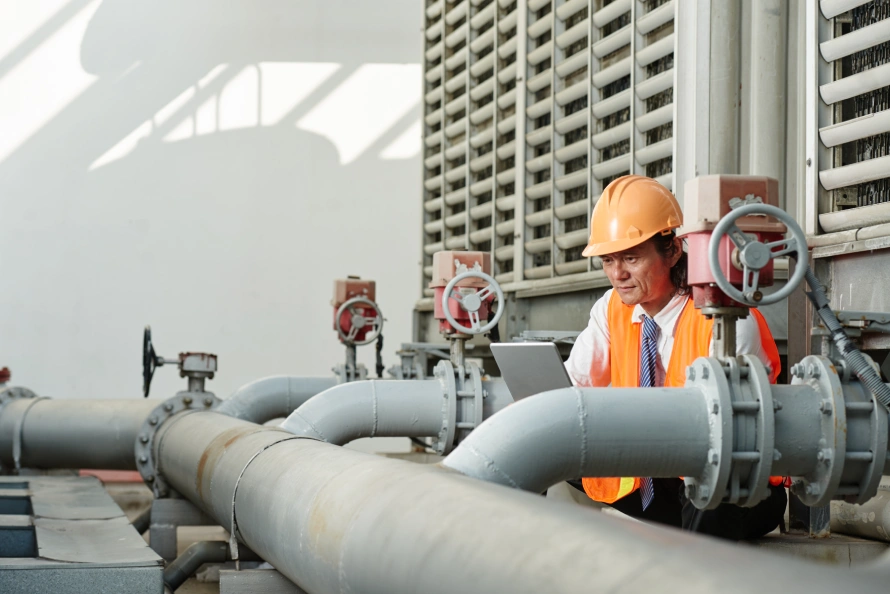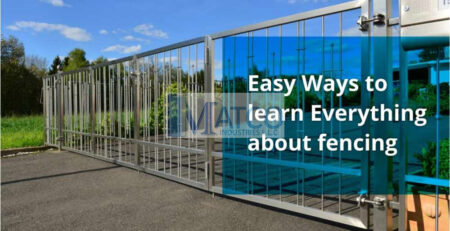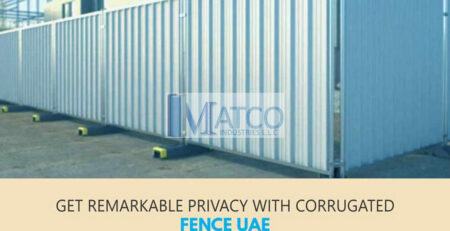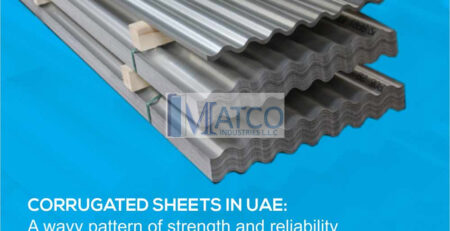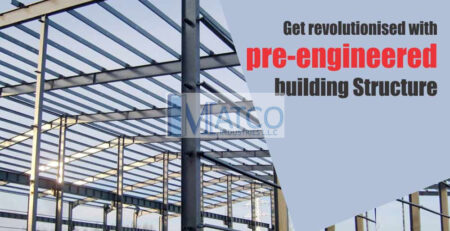Vital Difference Between Pipes and Tubes | Everything You Need to Know
Matco Industry is one of the trusted and leading scaffolding companies across the UAE, Dubai, and the Middle East. We are known for our top-notch manufacturing qualities, indulging the latest advanced technologies, and a wide range of high-quality stainless steel pipe and tube Saudi Arabia.
Moreover, mild steel pipes and tubes are often used interchangeably. However, there are vital key differences between pipes and tubes, particularly in their measurement techniques and applications. Furthermore, in this comprehensive blog, we will discuss the precise difference between a steel pipe and tube in Saudi Arabia. Let’s get started!
Overview of Steel Pipe
Mild steel pipe Saudi Arabia is usually round and used to transport liquids, solids, or goods, such as powders and pallets. They are calculated using either Nominal Pipe Size (NPS) or Diameter Nominal (DN) elsewhere. Nominal Pipe Size refers to a standardized system for pipes, indicating their diameter and their conveyance capacity. Nevertheless, it does not indicate the exact internal dimension. The key dimensions for pipes are the ID (inner diameter), WT (wall thickness), and OD (outer diameter). Additionally, it is known as the pipe schedule for achieving precise dimensions.
For instance, a pipe and tube in Dubai might be classified by schedules, such as Sch. STD, Sch. 40, or Sch. XS to explain the wall thickness. Likewise, different NPS pipes can have the exact schedule but different wall thicknesses.
What are the Different types of Pipes?
Here, we have mentioned the types of SS sheet and pipe in Saudi Arabia that you must know:
1. Seamless Stainless Steel Pipes
2. Welded Stainless Steel Pipes
3. Round Stainless Steel Pipes
4. Square and Rectangular Stainless Steel Pipes
5. ERW (Electric Resistance Welded) Pipes
Moreover, the primary difference between a mild steel pipe Saudi Arabia is its shape. Pipes are consistently round, while tubes can be found in different shapes and sizes, including cylindrical, round, square, and rectangular.
Technical Configuration of Steel Pipe Series
| Parameter | Specification / Description |
|---|---|
| Product Name | Steel Pipe Series |
| Type | Seamless / Welded (ERW, LSAW, SSAW) |
| Material Grade | Carbon Steel (ASTM A53, A106, API 5L Gr.B, Gr.X42–X80) Alloy Steel (ASTM A335 P1–P91) Stainless Steel (ASTM A312 TP304, TP316, TP321) |
| Standard / Specification | ASTM, ASME, API, DIN, JIS, EN |
| Outer Diameter (OD) | 6 mm – 2500 mm |
| Wall Thickness (WT) | 0.5 mm – 80 mm |
| Length | 6 m, 12 m, or customized (up to 18 m) |
| End Type | Plain End (PE), Beveled End (BE), Threaded (NPT/BSP) |
| Surface Treatment | Black / Bare, Galvanized, 3PE / 3PP Coated, Varnished, Oiled, Painted |
| Tensile Strength | ≥ 415 MPa (varies by grade) |
| Yield Strength | ≥ 240–485 MPa (depending on material grade) |
| Elongation | 20% – 35% (typical) |
| Applications | Oil & Gas Transport, Structural Support, Water Supply, Mechanical Engineering, Petrochemical, Construction |
| Inspection & Tests | Hydrostatic Test, Eddy Current, Ultrasonic, Visual & Dimensional Check |
| Certification | ISO 9001, API 5L/5CT, EN10204 3.1/3.2 |
| Coating Options | FBE, 3LPE, Bituminous, Varnish, Epoxy |
| Connection Type | Welded / Threaded / Flanged |
Overview of Steel Tube
While an MS pipe Saudi Arabia is always round, the manufacture of tubes comes in various shapes and sizes, including rectangular, round, oval, and more. Similar to tubes, these elements have dimensions, such as weight and external diameter, which makes the ordering process much more seamless. Moreover, the hollow section of pipe elements is estimated from the outside diameter (OD), in combination with the wall thickness (WT). Nonetheless, the primary difference between steel tubes and pipes is that pipes have measurements in millimeters or inches, whereas steel tubes typically have measurements in millimeters. Also, in tubes, the dimensions often reflect the price of the hollow section.
In short, while both tubes and pipes are hollow, pipes are primarily used for converting materials, with a concentration on internal capacity. In contrast, tubes are often used for more specialized, dimensional objectives.
What are the Different Types of Steel Tubes?
Here, we have mentioned the list of different steel tube types that you must know before planning to opt for them:
1. Welded Tubes
2. Cold-Drawn Tubes
3. Hydraulics and Pneumatic Tubes
4. Precision Tubes
5. Seamless Steel Tubes
6. Capillary Tube
7. Heat Exchanger Tubes
8. Coiled Tubes
Technical Configuration of Different Shapes of Steel Tubes
1. Square Hollow Section of Steel Tubes
| Nominal Size (mm × mm) | t (mm) | A (cm²) | W (kg/m) | I about xx/yy (cm⁴) | r (cm) | Wel (cm³) | Standard / Grade | Yield Strength (Re) MPa | Tensile Strength (Rm) MPa |
|---|---|---|---|---|---|---|---|---|---|
| 25 × 25 | 2 | 1.7 | ~1.43 | ~1.43 | ~0.92 | ~1.14 | ASTM A500 | ~ as per grade | ~ as per grade |
| 25 × 25 | 3 | ~2.33 | ~2.04 | ~1.72 | ~0.86 | ~1.82 | ASTM A500 | – | – |
| 32 × 32 | 2 | ~2.30 | ~1.91 | ~3.37 | ~1.21 | ~2.10 | ASTM A500 | – | – |
| 40 × 40 | 2.6 | ~3.82 | ~3.00 | ~8.80 | ~1.52 | ~4.40 | EN 10210-2 / EN 10219 | depending on grade S235 / S355 etc. | – |
| 40 × 40 | 5 | ~6.73 | ~5.28 | ~13.4 | ~1.41 | ~6.68 | EN 10210-2 / EN 10219 | – | |
| 50 × 50 | 2.6 | ~4.86 | ~3.81 | ~18.0 | ~1.93 | ~7.21 | EN 10210-2 / EN 10219 | – | |
| 20 × 20 | t from ~1.00 –2.00 | – | – | – | – | – | ASTM / EN standards typical ranges | – |
2. Rectangle Hollow Section of Steel Tubes
| Size (mm) | Wall Thickness (mm) | Cross-Sectional Area (cm²) | Weight (kg/m) | Moment of Inertia Ix (cm⁴) | Moment of Inertia Iy (cm⁴) | Section Modulus Zx (cm³) | Section Modulus Zy (cm³) |
|---|---|---|---|---|---|---|---|
| 40 × 20 | 2 | 1.39 | 1.09 | 3.43 | 0.94 | 1.72 | 0.94 |
| 50 × 25 | 2 | 1.8 | 1.41 | 7.28 | 2.05 | 2.91 | 1.64 |
| 60 × 40 | 2.5 | 3.2 | 2.51 | 25.1 | 9.42 | 8.36 | 4.7 |
| 80 × 40 | 3 | 4.5 | 3.54 | 53.8 | 17.4 | 13.5 | 6.45 |
| 100 × 50 | 3 | 5.64 | 4.43 | 117.2 | 38.8 | 23.4 | 10.1 |
| 120 × 60 | 4 | 8.71 | 6.84 | 243.1 | 75.6 | 40.5 | 15.5 |
| 150 × 100 | 5 | 14.1 | 11.05 | 752 | 257 | 100 | 51.4 |
| 200 × 100 | 6 | 19.5 | 15.3 | 1520 | 458 | 152 | 91.6 |
| 250 × 150 | 8 | 34 | 26.7 | 4630 | 1560 | 370 | 208 |
| 300 × 200 | 10 | 53.5 | 42 | 10800 | 4040 | 720 | 404 |
3. Oval Hollow Section of Steel Tubes
| Parameter | Description / Unit | Typical Range / Example Values |
|---|---|---|
| Shape | Geometry of a tube | Elliptical / Flat oval |
| Material Standard | Governing specification | IS 4923 / EN 10219 / ASTM A500 |
| Material Grade | Steel grade designation | YSt 240 / YSt 310 / S355J2H / Grade B |
| External Dimensions (A × B) | Major axis × Minor axis (mm) | 40×20, 50×25, 60×30, 80×40, 100×50, etc. |
| Wall Thickness (t) | mm | 1.2 – 8.0 mm |
| Length | Standard or custom (m) | 6.0 / 7.5 / 12.0 m |
| Corner Radius (R) | mm | Typically 2t – 3t |
| Cross-sectional Area (A) | cm² | Depends on size and wall thickness |
| Mass per Unit Length (W) | kg/m | Varies with A (e.g., 2.5 – 25 kg/m) |
| Moment of Inertia (I) | cm⁴ | Size-dependent (used for bending calculations) |
| Section Modulus (Z) | cm³ | Size-dependent |
| Surface Finish | Type | Hot Rolled / Cold Formed / Galvanized / Painted |
| Tensile Strength | MPa | 340 – 510 MPa |
| Yield Strength | MPa | 240 – 355 MPa |
| Elongation | % | ≥ 20% |
| Manufacturing Process | Process type | ERW (Electric Resistance Welded) / Seamless |
| Tolerance | As per the standard | ±0.5 mm (dimension), ±10% (thickness) |
| End Finish | Ends of the tube | Plain / Beveled / Threaded |
| Applications | Typical uses | Architectural frames, automotive parts, furniture, and structural supports |
Applications SS Pipe and Tube
Stainless steel pipe and tube in Saudi Arabia is primarily used in different systems to transport various components. Pipes contain a mixture of substances, including solids, liquids, and gases. On the other hand, tubes are mainly used for structural purposes. For instance, tubes are used in staging and scaffolding to support workers and raw materials during repairs, maintenance, or construction. Moreover, they play an imperative role in maintaining and building structures, such as buildings, bridges, and other human-made constructions.
Comparison Table of the Key Differences Between Steel Pipes and Tubes
| Parameter | Steel Pipes | Steel Tubes |
|---|---|---|
| Shape | Generally cylindrical (round) | Can be round, square, or rectangular |
| Measurement Basis | Measured by inside diameter (ID) | Measured by outside diameter (OD) |
| Purpose | Used to transport fluids or gases | Used in structural and mechanical applications |
| Tolerance | Lower dimensional tolerance | Higher dimensional tolerance and precision |
| Wall Thickness | Usually uniform | Can vary depending on design and strength needs |
| Strength | Designed for pressure handling | Designed for strength, rigidity, and shape |
| Surface Finish | Rougher finish | Smoother finish for aesthetic or mechanical purposes |
| Cost | Generally cheaper | Slightly more expensive due to precision manufacturing |
It’s Time to Wrap Things Up!
The primary difference between steel pipes and tubes lies in their diverse range of shapes, sizes, and applications. Furthermore, a mild steel pipe in Saudi Arabia is typically round and used for transporting medium-sized materials. At the same time, tubes are available in various shapes and are often employed for structural purposes.
However, if you are searching for a manufacturing company that provides both steel tubes and pipes, look no further than Matco Industry. We offer a wide range of tubes and pipes in various shapes and sizes. Additionally, we provide customization services, allowing you to tailor your experience to your specific needs and preferences. So, what are you waiting for? Connect with us today!

